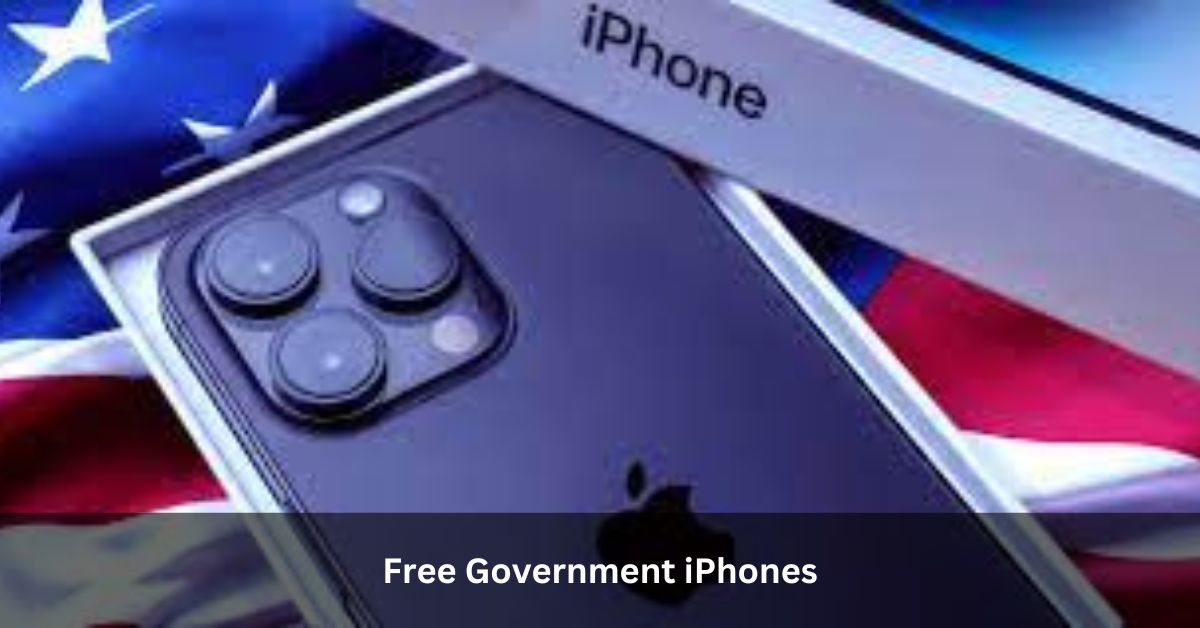Introduction:
Owning a smartphone has become essential in today’s world. However, the cost of purchasing and maintaining a device can be a significant barrier for low-income individuals and families.
Fortunately, government programs aim to bridge this gap by offering free or discounted phone plans and devices, including iPhones, to eligible individuals. This article provides a comprehensive overview of obtaining a free government iPhone, outlining eligibility criteria, application processes, and essential considerations.
Table of Contents
Overview of Free Government iPhones:
The concept of a “free government iPhone” doesn’t imply receiving an iPhone directly from the government. Instead, it involves participating in government-funded programs that offer free or heavily subsidized mobile phone service, potentially including iPhones as part of the package. These programs primarily focus on ensuring access to essential communication tools for individuals with limited financial resources.
Background Information:
The need for government assistance in providing affordable phone services arose with the growing importance of connectivity.
The Federal Communications Commission (FCC) established the Lifeline program in 1984 to ensure access to basic phone service for low-income individuals. Over the years, the program evolved to encompass mobile services and devices, leading to the possibility of acquiring a free or discounted iPhone.
Government Programs Offering Free iPhones:
Two key programs offer the potential for a free government iPhone:
- Lifeline: This FCC-run program provides eligible individuals with monthly discounts on phone service and, in some cases, free refurbished phones.
- Affordable Connectivity Program (ACP): Launched in 2021, the ACP builds upon the Lifeline program, offering wider coverage and potentially higher discounts on service and devices, including smartphones like iPhones, depending on availability and participating providers.
Eligibility Criteria and Application Process:
Eligibility for these programs is based on specific criteria, typically income level or participation in other government assistance programs like Medicaid, SNAP (Supplemental Nutrition Assistance Program), or public housing assistance. Each program has its own application process, but generally involves:
- Verifying eligibility: Use the Lifeline National Verifier (https://www.lifelinesupport.org/get-started/) or individual program websites to check eligibility.
- Choosing a participating provider: Select a wireless carrier that offers phones and service through the program in your area.
- Completing an application: Submit the required paperwork to the chosen provider.
Documents Required for Free Government iPhone:
The specific documents needed may vary by program and provider, but common requirements include:
- Proof of income (pay stubs, tax returns)
- Government assistance program participation documentation (Medicaid card, SNAP benefits letter)
- Proof of identity (government-issued ID)
- Proof of address (utility bill, rental agreement)
Benefits and Limitations of Free Government iPhones
1. Benefits:
- Affordability: Receive a free or significantly reduced-cost phone service and device, reducing financial burdens.
- Increased connectivity: Access essential communication tools, staying connected with family, friends, and job opportunities.
- Improved access to information and resources: Utilize the internet on the phone for job searching, government services, and educational resources.
2. Limitations:
- Phone availability: Availability of specific phone models, including iPhones, might be limited and subject to change.
- Service restrictions: Plans might have limitations on minutes, texts, and data usage.
- Eligibility requirements: Not everyone qualifies for the programs, and income restrictions apply.
How to Choose the Right Plan and Carrier:
When choosing a plan and carrier, consider the following factors:
- Network coverage: Ensure the chosen carrier offers adequate coverage in your area.
- Plan details: Compare available plans, considering call, text, and data allowances based on your needs.
- Device availability: Check if the carrier offers iPhones through the program and in what models and conditions.
- Customer reviews: Read reviews of different carriers to assess their customer service and network reliability.
Tips for Maximizing Usage:
Once you receive your free government iPhone, ensure you maximize its benefits by:
- Understanding your plan: Familiarize yourself with call, text, and data limitations to avoid exceeding allowances and incurring extra charges.
- Exploring free and low-cost apps: Look for free alternatives for essential apps and services like communication, entertainment, and productivity tools.
- Connecting to Wi-Fi: Utilize free Wi-Fi networks whenever available to minimize data usage on your mobile plan.
- Learning basic phone skills: Explore tutorials and resources to learn essential phone use features and applications.
Future Outlook and Potential Developments:
The landscape of government assistance programs for mobile phone access is constantly evolving. The ACP program is expected to expand its reach in the coming years, potentially making free or discounted smartphones, including iPhones, more readily available to eligible individuals.
Alternatives to Consider:
While obtaining a free government iPhone is a viable option for some individuals, it may not be suitable for everyone. Here are some alternative solutions to consider:
- Used phones: Purchasing a used phone from a reputable seller can be a budget-friendly option. However, carefully assess the phone’s condition and functionality before making a purchase.
- Low-cost phone plans: Explore alternative wireless carriers offering affordable prepaid plans without requiring expensive contracts.
- Government assistance for internet access: Programs like the Emergency Broadband Benefit (EBB) provide discounts on internet service for eligible individuals. This can open doors to using internet-connected devices like tablets or computers for communication and resource access.
Conclusion:
Free government iPhones through programs like Lifeline and ACP offer a valuable resource for individuals facing financial limitations. Understanding the eligibility criteria, application processes, and program limitations is crucial before applying.
By carefully considering your needs and exploring alternative options, you can make an informed decision regarding the most suitable solution for your mobile communication needs. Remember, staying connected is essential in today’s world, and various options exist to ensure everyone has access to this fundamental tool.
Read:
- Garforfans: The Ultimate Digital Community for Fans in 2025
- Onnilaina: The Emerging Concept of “Fortunate Lending” in Finland
- Bin Matcha: Premium Green Tea Powder for Health, Flavor, and Wellness Benefits
- SFM Compile Club: The Ultimate Community for Source Filmmaker Creators and Animators
- 5starsstocks.com Passive Stocks: The Ultimate Guide to Building Wealth with Low Fees and Diversified Portfolios
